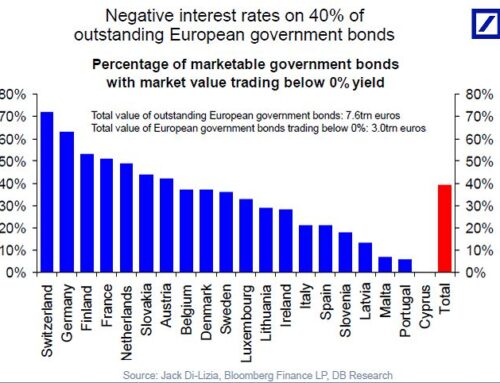Dear Readers,
After a volatile month of Jun for the Indian stock market, July proved to be better than expected, in terms of performance. In my previous post, as part of the closing comments, I said that hopefully, Jul end will reduce the intensity of the volatility, abate selling and will see modest buying coming back into the stock markets. ( Here )
The FII’s have reduced the selling intensity but at the same time, the DII money coming into the market has also slowed down. For the month of Jul, FII’s net of purchases and sales in equities was a positive of Rs. 490 cr. vs. a negative Rs. 3637 cr in the previous month. MF activity was at Rs. 4000 cr. as compared to Rs. 6500 cr. last month.
The FII investment direction is appropriate but it is not a definitive move, yet. There were many factors that helped July to be a better month. Crude prices cooled down to around $74/bl, after moving perilously close to $80/bl in June. The Rupee provided sufficient volatility, ranging between 68.29 – 69.09 to the dollar. The higher end was breached twice in a span of only 1 wk, before ending at 68.56 by close of Jul.
The RBI increased the Repo rate by 0.25% to 6.50%, but the market shrugged off this expected increase and the bond yields cooled down to 7.74% post the monetary policy in the first wk of Aug.
The stock market didn’t encounter serious issues in Jul and took in the results season in the best possible way, rewarding the stocks that gave excellent results while seriously punishing poor performance and any downtrend in sales or profits. Most of the results were either inline or outperforming the expectations / analyst polls. I will share the analysis of the results after discussing the indices.
Except for the Auto Index, most of the Nifty indices were in the green, with good to excellent returns. The outperformance had come from the PSU Banks, followed by the Oil & Gas segment, FMCG and, the rest of the pack. Also, the auto index was down due to the govt’s new rules on axle loading which have created quite a bit of confusion from the point of regulations – implementation as well as safety. The govt is expected to release a note addressing all the queries put forward by the various OEM’s.
In comparison with previous time periods, FMCG seems to be the only sector which is able to perform better than other indices.
Let us look at the performance of the 19 BSE indices. Oil & Gas was the best performing index giving more than 10% returns in the month, followed by PSU index which rose 8.4%. This was aided by the plateauing and increase in recovery of the NPL’s by Bank of Baroda, Canara Bank and others, which in turn propped up the expectations on other banks.
There is hardly any surprise that most of the top 30 performing stocks of Jul, have been from small & midcap space.
Note: Many of the companies declared results at the end of Jul and some of them have been poor. Hence these stocks have lost a little, in the last 3 days and will continue to lose more. For eg: Arrow Greentech – The company posted a 70.7% decrease in consolidated sales and posted a net loss as compared to y-o-y. So, we can expect downtrend for this company.
Venky’s got a boost because it was released from the ASM list. Hence, the companies which are in the below list, might have run up too much in a short time and might see correction going ahead, due to various reasons.
Let me share the information on the FY19 first quarter results declared by the companies.
Good Results – Based on Sales & Profits – While considering both Y-O-Y & Q-O-Q basis.
Due to the issue of length, I am sharing only the top 10 stocks from each list, that I had prepared for my personal use. The Heading for each of the tables is clearly mentioned and all numbers are actually from the Q1FY19 results.
Some of the worst performers of Q1FY19 also deserve a mention – both on sales & profits – on a consolidated and standalone basis. I have shared only the top 10 stocks from these lists.
Conclusion: The quarterly results have been good for most companies and have shown good growth in either sales or margins or profits. But the biggest difference in results has come from banks – mainly PSB’s.
Profits of the 23 banks that have reported earnings for Q1 FY19 so far has come in at Rs 8,072 cr. vs. loss of Rs 11,895 cr.
However, the profits are down 27% y-o-y due to higher stress in the balance sheet. They have also made more M2M treasury losses in Q1FY19 as yields moved up sharply.
Canara Bank, Bank of India (aided by tax write back), Bank of Baroda & Axis Bank reported the highest decline in losses on a q-o-q basis.
ICICI Bank (which reported its first-ever quarterly loss), HDFC Bank & Kotak Mahindra Bank reported the highest decline in profit in q-o-q.
Though I consider this deterioration as minor, it is still important to point them out – for YES Bank & HDFC Bank.
For all readers, is a good time to go through all the stocks in your portfolio, check their quarterly results and decide appropriately if they are worth keeping or letting them go. (if they are posting continuous net losses). Also, it is as good a time as any, to check results from other companies and contemplate investments, irrespective of the selection being from large-cap, midcap or small cap.
At the same time, I feel that the variance between the large caps vs. small & midcaps will continue reducing in the coming months also. Though Aug is normally not an excellent month for stock market returns based on historical data, this Aug can prove to be a little different. So, get your homework done and plan accordingly.
Full list of results posted in my tweets.
Image and data credits: Moneycontrol, EquityMaster, FYERS, CNBC TV18 website, XE Currency Converter, Economic Times, Business Standard, and other publicly available information.

















